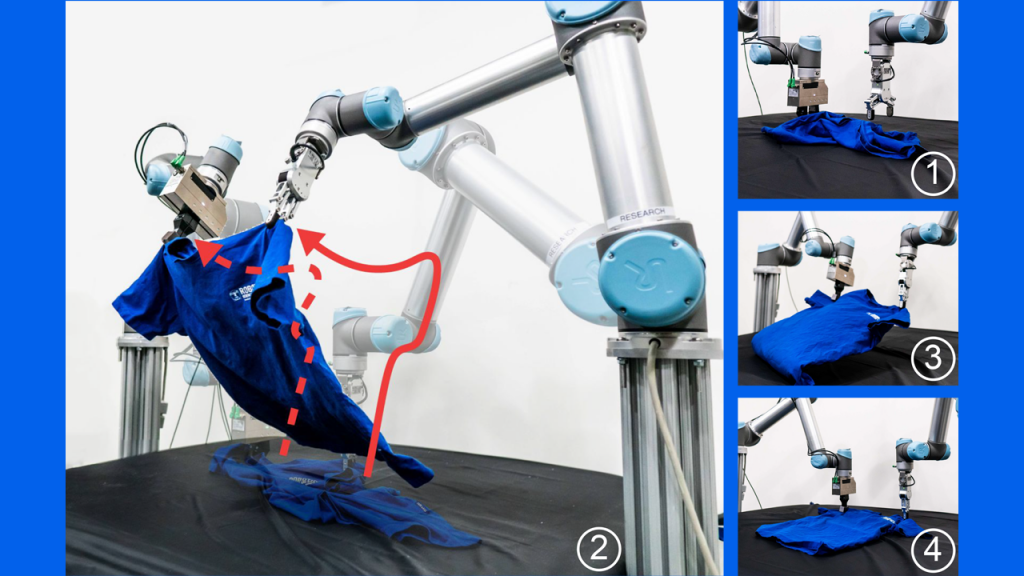In January 2021, the Toyota Research Institute (TRI) revealed the addition of 13 new participants to its University Collaborative Research Program while continuing its long-standing collaborations with MIT, Stanford, and the University of Michigan.
More than one year later, 34 projects have launched — each featuring a TRI researcher as a co-investigator who works along with a university collaborator. The goal? Push the boundaries of exploratory research in artificial intelligence (AI) to amplify the human experience.
Here are three projects that highlight how their progress could change your future for the better.
Robots That Do Chores?

As part of a five-minute morning routine, you might make your bed, put on your shirt and wipe your face with a towel without thinking much about it. But seemingly mundane tasks remain an open challenge for today’s robot systems.
TRI and Columbia University have taken on that challenge by investigating how perception and manipulation work when handling deformable objects — such as flinging a bedsheet over a mattress while making your bed.
Their initial progress is impressive. First, there is GarmentNets, a method for robots to understand cloth by reasoning separately about shape and configuration. There is also FlingBot, a system that leverages learned models and dynamic movements to quickly unfold clothes.
Their research continues with the goal of discovering scalable ways to enable robots to help people with household tasks.
Upping the Safety Tech in Automated Vehicles

Understanding dynamic scenes, including object detection and tracking, is important for an automated vehicle or robot to navigate safely.
In collaboration with Stanford University and Carnegie Mellon University, TRI is working to develop a holistic representation of traffic scenes that captures all actors’ spatial and temporal information in a scene. The goal? Provide a more robust understanding of dynamic scenes while reducing the need for vast amounts of manually labeled data.
A recent collaboration with the Interactive Perception and Robot Learning Lab from Stanford University developed interpretable multi-object tracking algorithms that can benefit from multiple sensor inputs. The work, published in ICRA 2021, uses machine learning methods to combine diverse sensory data from cameras and lidars in a given scene. It provides robust and accurate tracking performance and is flexible and easily integrated into different robotics systems.
Currently, TRI is adapting the algorithm to evaluate its performance in its automated vehicles. TRI is also working on exploring better object representations by aggregating temporal and spatial information for tracking.
Building Trust in AI

AI systems are becoming common, with current systems seeking to push the boundaries of improved control and decision-making in automated driving. Often, this comes at the expense of high development overhead since it’s unclear how such systems operate and make decisions, which can hinder user acceptance and trust.
A collaboration with TRI, Stanford University, the University of California, Berkeley, and the University of Michigan is developing high-quality machine learning algorithms, including anomaly detectors, planners, and models of humans. They are also working on intelligent simulation strategies to improve the trustworthiness of autonomous driving systems and other human-amplification applications.
The project explores how to embed formal logic into deep-learned AI systems to achieve high performance with user-friendly systems. The goal? Achieve three primary outcomes:
- High-quality models of human behaviors to enable AI systems to understand the world in simple, intuitive terms (such as goals or rules of the road in driving)
- Computational approaches that leverage the benefits of traditional AI and logic-based reasoning
- Applications to driving simulators and automated driving planners
Meanwhile, TRI’s collaborative research program has gone beyond its successful projects. It’s also created a valuable pipeline of talented researchers. With that pipeline in motion and TRI’s continued collaborations, the future of progress continues.
“The university partners have published hundreds of technical papers,” said Eric Krotkov, TRI’s chief science officer. “Scores of staff, postdocs and interns have moved from the universities to TRI. A primary reason for this success is that both sides have painstakingly selected and made long-term commitments to one another.”
For more information about Toyota Research Institute, visit here.
